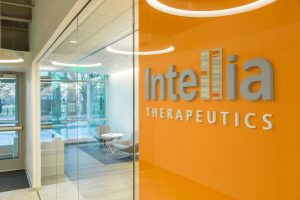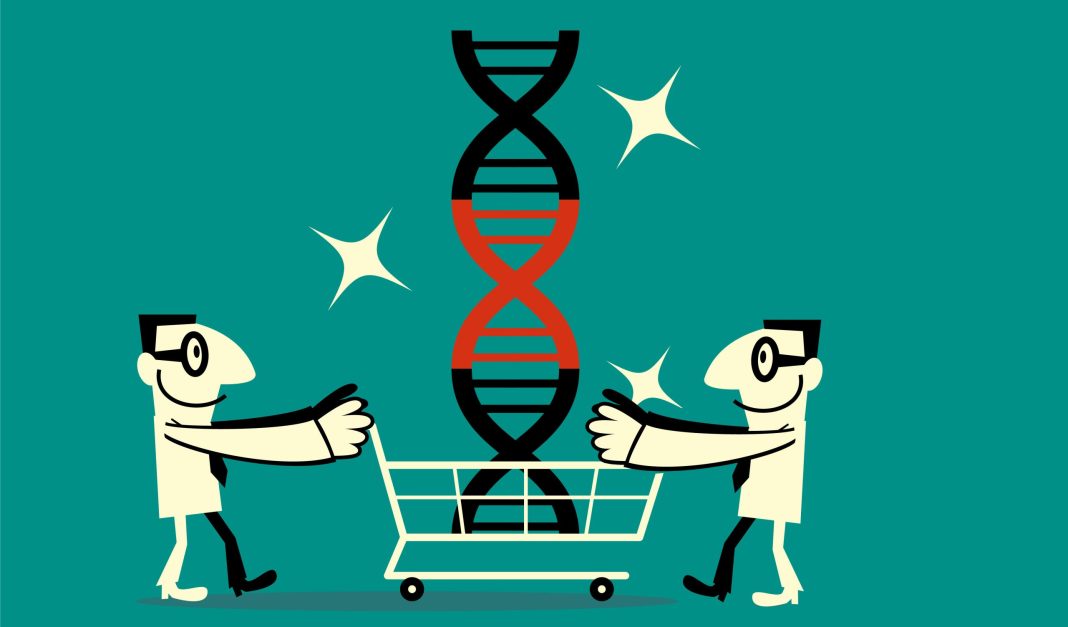Relationships that outlast the honeymoon period typically exchange novelty for routine, which sounds dull, but routine can be good. Consider the relationships that are forming between CRISPR startups and big pharma companies. Yes, these relationships are in their honeymoon period, but they have a solid basis: a powerful and maturing genome editing technology.
CRISPR genome editing technology is still just 10 years old. But over the past few years, it has racked up some notable achievements. Exciting data were generated by the first clinical trial to assess a CRISPR therapeutic for a genetic disorder (sickle-cell disease). A landmark paper in the New England Journal of Medicine documented the first use of in vivo gene editing in human patients (a CRISPR therapeutic showed promise against transthyretin amyloidosis). And, of course, the 2020 Nobel Prize in Chemistry was awarded “for the development of a method for genome editing.”
The most exciting developments in CRISPR treatments often come from startup companies. But CRISPR treatments are also attracting the interest of large pharma companies. In many instances, the startups and the big pharma companies are opting to partner with each other. For example, small/large pairings include Beam Therapeutics/Pfizer, Metagenomi/Moderna, CRISPR Therapeutics/Vertex Pharmaceuticals, Mammoth Biosciences/Bayer, Intellia Therapeutics/Regeneron Pharmaceuticals, Intellia/Novartis, and Caribou Biosciences/AbbVie.

The small startups benefit from the resources and expertise that large pharma companies can bring to bear in clinical trials, which entail patient recruiting, FDA approvals, public relations, and other difficult tasks. According to Rodolphe Barrangou, PhD, professor of food science at North Carolina State University and editor-in-chief of the CRISPR Journal, trials are “difficult and tedious and strenuous.”
The large pharma companies benefit by avoiding high-risk research activities. Also, large pharma companies often find that partnering is the easiest and quickest way for them to become players in the CRISPR game.
CRISPR partnerships are symbiotic relationships, Barrangou points out. The idea is to set up “win-wins.” And if CRISPR partnerships prove to be stable—that is, if they last long enough to benefit patients as well as the companies involved—one could credit CRISPR partnerships with “win-win-wins.”
“Pfizer called us”
The most recent genome editing company to partner with big pharma is Beam Therapeutics, a young company bringing base editing to human disease. In January of this year, Beam and Pfizer announced an exclusive four-year research collaboration focused on in vivo base editing programs.

CEO, Beam Therapeutics
How did these two companies come together? Perhaps surprisingly, Pfizer called Beam. Specifically, the call came from Pfizer’s COVID-19 franchise last summer, notes John Evans, Beam’s CEO.
Beam’s focus is base editing, a next-generation version of CRISPR editing that introduces precise, single-base substitutions without cleaving the DNA. Beam delivers the base editor, in every case, with an mRNA. To accomplish in vivo delivery, the company uses lipid nanoparticles (LNPs) as vectors. But whether the mRNA is delivering a base editor to edit the genome or encoding the SARS-CoV-2 spike protein as in the COVID-19 vaccines, the product format is the same. It’s an mRNA in an LNP.
A year ago, through the acquisition of the company Guide Therapeutics, Beam obtained a screening platform to tune the LNPs and push them to go to different organs—not just the liver.
If there is one area that Pfizer has advanced over the past two years, it’s in LNP-encapsulated mRNAs. But Pfizer decided that if it was to take advantage of its capabilities and move into genome editing, it would need base editors. And so, Pfizer approached Beam with a partnership proposal. According to Evans, the proposal was attractive because it would allow Beam to shift later stage development tasks to Pfizer: “Beam could say, ‘Here you go, Pfizer. We’ll support you. But you’re doing the heavy lifting for the future phases.’”
In a joint announcement, Pfizer and Beam indicated that their collaboration would focus on in vivo base editing programs for three targets for rare genetic diseases of the liver, muscle, and central nervous system. The announcement emphasized that the collaboration would combine Pfizer’s deep experience in global drug development (including programs utilizing mRNA, LNPs, and gene therapy) with Beam’s leadership in base editing and mRNA/LNP delivery technologies.
Risk reduction
The pharma industry has changed in the past decade or two, explains Barrangou, who has co-founded several biotech companies including Intellia Therapeutics. Companies have learned to acquire new technologies to de-risk their investments. Rather than invest in R&D, taking the high-risk approach of building discovery from within, the companies have realized that they’re more successful buying it from without.

Pharma companies are placing bets in CRISPR technology, notes Barrangou, through these partnerships. Their investments are derisked when the CRISPR companies meet certain milestones. For example, CRISPR companies may need to publish positive clinical data, pass benchmarks in trials, make progress with the FDA, and complete large fundraising rounds. If successful, the CRISPR company may be acquired down the road.
Buying a later stage CRISPR startup with good technology instead of developing it in-house can be advantageous for pharma companies. Although pharma companies may pay more, especially if they have to bid against each other, they may enjoy higher success rates.
Evans explains that there have been a couple of phases of these types of deals. The first deals, back in 2014 and 2015, when CRISPR news was exploding, were driven by enthusiasm (or perhaps hype, Evans suggests). That was followed by a lull, a “wait and see” period, with pharma companies turning their attention to gene therapy for a few years. In the meantime, the CRISPR companies were moving forward. Now, he says, gene editing has arrived again. But, this time, it’s more mature.
According to Barrangou, CRISPR technology has transitioned “from crazy idea to clinical reality.” For example, Victoria Gray—the first American patient who received a CRISPR treatment for sickle-cell disease—is approaching her three-year anniversary. With each success story, CRISPR-based gene therapies are perceived to be safer and more efficacious. And big pharma companies are keeping their eyes on CRISPR—monitoring its progress according to measures such as patents, papers, and venture capital investments. For 10 years, it’s been growing, notes Barrangou. But now, it’s hot.
As a result, pharma-CRISPR deals are heating up. AbbVie left a deal with Editas Medicine (originally made by Allergan, which AbbVie acquired in 2020) to sign a new deal with Caribou Biosciences to engineer chimeric antigen receptor T cells. Moderna is funding a collaboration with Metagenomi to add CRISPR-based and other novel gene editing systems to its mRNA/LNP expertise to develop in vivo gene editing therapeutics. Earlier this year, Bayer and Mammoth Biosciences struck a deal for $40 million to develop in vivo gene editing therapies.
#RelationshipGoals
CRISPR Therapeutics (CRISPR Tx) and Vertex Pharmaceuticals are in a partnership that is reminiscent of a healthy marriage. The companies responded jointly to the questions for this article (which were sent to the companies separately), and members from each company shared authorship on a landmark New England Journal of Medicine paper (“CRISPR-Cas9 Gene Editing for Sickle Cell Disease and β-Thalassemia”) published in January 2021. The study was led by Haydar Frangoul, MD, medical director of Pediatric Hematology/Oncology for the Sarah Cannon Center for Blood Cancer at the Children’s Hospital at TriStar Centennial, but Vertex and CRISPR Tx funded the trial.
The NEJM paper reported early results on the ongoing trial of CTX001—an investigational, autologous, ex vivo CRISPR-Cas9 gene editing therapy that is being evaluated for patients suffering from transfusion-dependent β-thalassemia (TDT) and severe sickle-cell disease. In this case, a patient’s hematopoietic stem cells are edited to produce high levels of fetal hemoglobin in red blood cells.
The two companies entered a “unique 50/50 partnership” in 2015 to discover and develop new therapies for multiple targets. What made Vertex choose CRISPR Tx? Vertex describes itself as “a disease-first company.” Once it has identified a disease and target of interest, it pursues whichever modality may best address the underlying cause. CRISPR Tx was a perfect partner because it had the right set of tools and the commitment to work side by side to bring a new therapy to the clinic.
The companies say that their collaboration has facilitated the discovery and development of CTX001. In 2021, Vertex took over global execution and decision making for the program—paying CRISPR Tx $900 million up front with potential for an additional $200 million milestone payment upon CTX001 regulatory approval—including management of all global regulatory processes. Costs and revenues are shared 60/40 (Vertex/CRISPR Tx). Vertex notes that it will lead further development and commercialization efforts for CTX001.
Unlocking potential
Intellia and Regeneron delivered another human disease CRISPR milestone last summer when they published the first-ever clinical data that supports the safety and efficacy of in vivo CRISPR genome editing in humans. The results are published in the New England Journal of Medicine in a landmark paper, “CRISPR-Cas9 In Vivo Gene Editing for Transthyretin Amyloidosis.”
The news came five years after Intellia announced a partnership with Regeneron consisting of $75 million paid upfront, and a $50 million Regeneron investment in Intellia common stock. In May 2020, the two companies expanded the collaboration, with Intellia receiving $100 million through upfront cash and an equity investment. Regeneron says that genetic medicine represents an exciting new chapter for the company, and that it sees Intellia as a “likeminded science-focused and entrepreneurial group.”
How long will this partnership last? When the 2020 expansion was announced, the companies stated that they were extending their partnership until April 2024. At that point, Regeneron has an option to renew for an additional two years. Regeneron agreed to pay Intellia another $70 million upfront and invest another $30 million in Intellia common stock.
The collaboration combines Intellia’s genome editing technology innovations and expertise, as well as scientific leadership, with Regeneron’s expertise in research and development and human genetics. What does Intellia get, specifically? It tells GEN, “We continue to have access to the Regeneron Genetics Center, animal model development, tools, and reagents. We expanded our R&D collaboration in 2020 to discover, develop, and commercialize CRISPR-based treatments for liver-based genetic diseases.”
Intellia declares that the collaboration has helped “unlock the potential of CRISPR-based genome editing.” Given the broad potential of genomic medicines, Intellia says that strategic collaborations are an opportunity to accelerate programs outside its key areas of focus, and to expand its pipeline. Evans made a similar point: Beam’s partnership with Pfizer will allow Beam to expand its discovery efforts. In essence, the CRISPR companies gain bandwidth for discovery by being relieved of onerous development tasks.

The CRISPR dating game
CRISPR and pharma companies matching up sounds a bit like dating. Evans says that it is very much like that. He adds that, sometimes, you must go on a lot of dates and that the J.P. Morgan Health Care Conference is almost like speed dating. More important, though, are the long-term relationships. These companies, Evans explains, get to know each other over time. They ask, what are their interests? What are they doing? Do they connect? There are times, he notes, when you like them more than they like you, or the other way around. Sometimes, there isn’t quite the right fit. Sometimes, interest builds gradually until it finally culminates in a meeting of the minds. At that point, you enter a collaboration.
With Pfizer and Beam, it was a very fast courtship. In fact, Evans has never seen a deal close so quickly. Luckily for them, some whirlwind romances have a way of working out.

